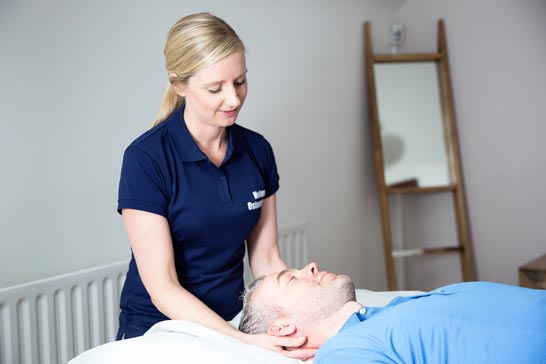5 Tips To Beat Shin Splints
May 1, 2018
Maria Nolan

Shin splints are best described as pain or discomfort in the lower leg and is also known as medial tibia stress syndrome. It is a common problem for people who do a lot of running or who are involved in activities such as squash, tennis and basketball, which puts weight repeatedly on the lower legs. People who do a lot of walking, especially on hard surfaces, can also suffer with shin splints.
Normally the pain will ease during periods of rest or inactivity, but if it doesn’t you need to get the problem resolved before doing any further exercise.
Some factors which might cause an individual to suffer with shin splints are:
• Sudden increase in training i.e. frequency or intensity.
• Increase in hill running
• Muscle tightness, particularly in the calf
• Fatigue or overtraining
• Inadequate footwear
• Over pronation in the foot (foot rolling inwards)
• Being overweight
How do I treat or prevent shin splints?
While not a serious problem, the symptoms can be reduced with the right professional advice and education. Here are our top tips to beat shin splints.
1. Unload to reload
If you are suffering with shin splints, we recommend 2-6 weeks of rest to prevent the symptoms from worsening. Your doctor may prescribe you anti-inflammatory drugs, while ice or cooling gels may also work effectively to reduce pain and manage any swelling.
With adequate rest and wearing the correct supportive footwear, your symptoms should start to settle. Generally, we advise that if you can walk pain free for 2 consecutive weeks, then it is fine to re-introduce exercise gradually.
2. Calf Stretching
As your symptoms start to ease, it is important to introduce a gentle stretching programme. You’ll find plenty of calf stretching exercises online which are effective in managing shin splints and will help release tension from the calf and lower leg muscles. Start with gentle stretches and work from there.
3. Get yourself a foam roller
Foam rolling is great for releasing and lengthening any tight muscles. Over stretching or using a foam roller incorrectly can cause damage to the muscle tissue, however, so it is important to receive guidance from a professional.
4. Calf Strengthening
Calf strengthening exercises will help build up the strength in the muscle, which will help prevent shin splints from reoccurring. Strengthening exercises for the calf may include a simple Heel Raise or the use of elasticated resistance bands. Have a chat with your local osteopath or physio to find the best strengthening exercises for you.
5. Strengthen your core and glutes
Research has shown that shin splints may also be partly caused by reduced strength in muscle groups that are located further away from the lower limb, including the glutes and core muscles. As you return to exercise, make sure to incorporate these strengthening exercises into your routine regularly.
By focusing on these five areas, you should find that shin splints become less of a problem for you going forward. If you are not seeing any noticeable improvement during the rest period, you should speak with an osteopath in case something more serious is going on. Some people will need a specific treatment and stretching programme to get them back to full health.
If you have any questions about the above, please do not hesitate to get in touch. Remember we offer all new patients a FREE 15 minute consultation to discuss your problem and then we can explain if and how we can help.
Thanks for reading.
Maria





